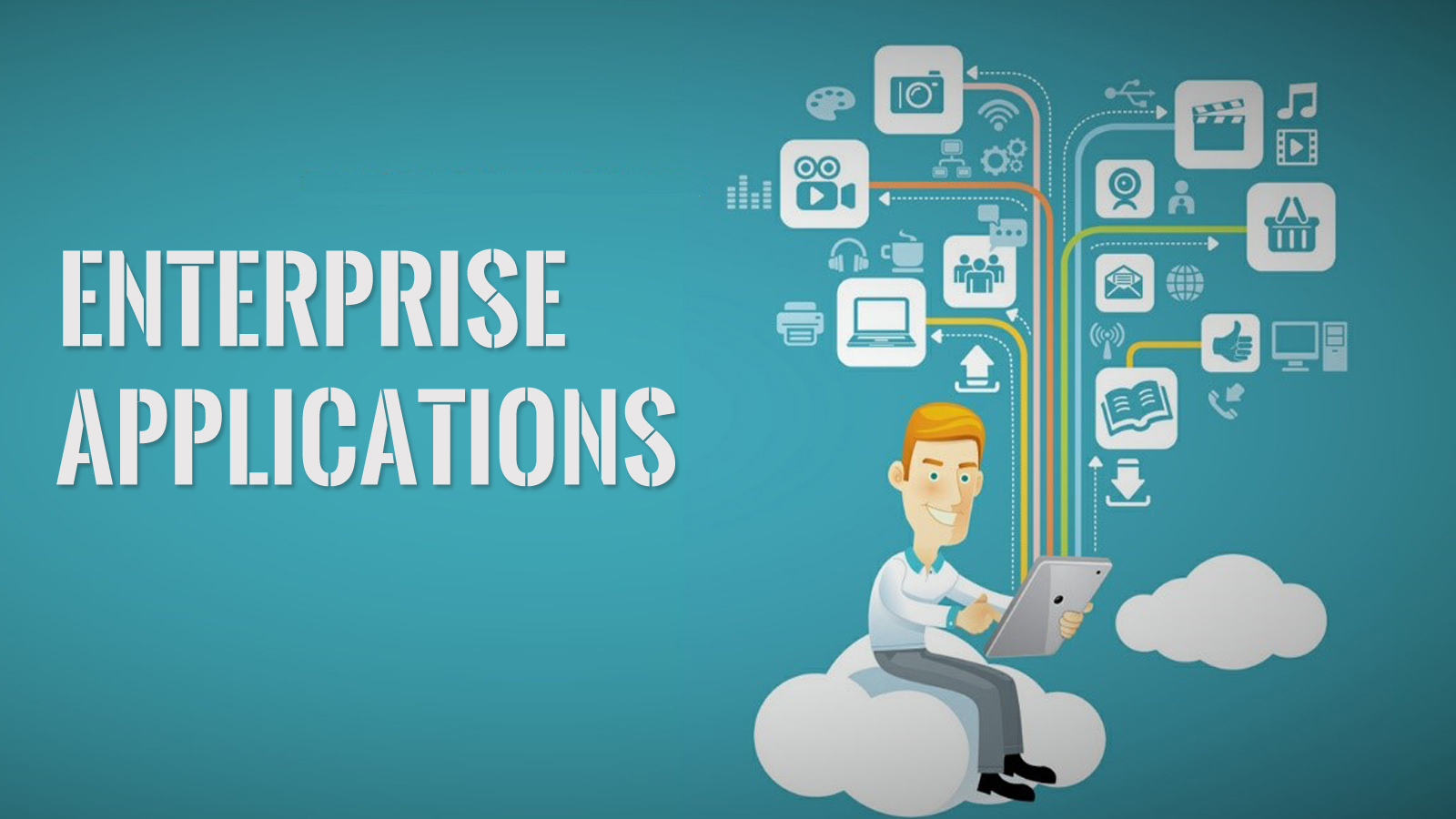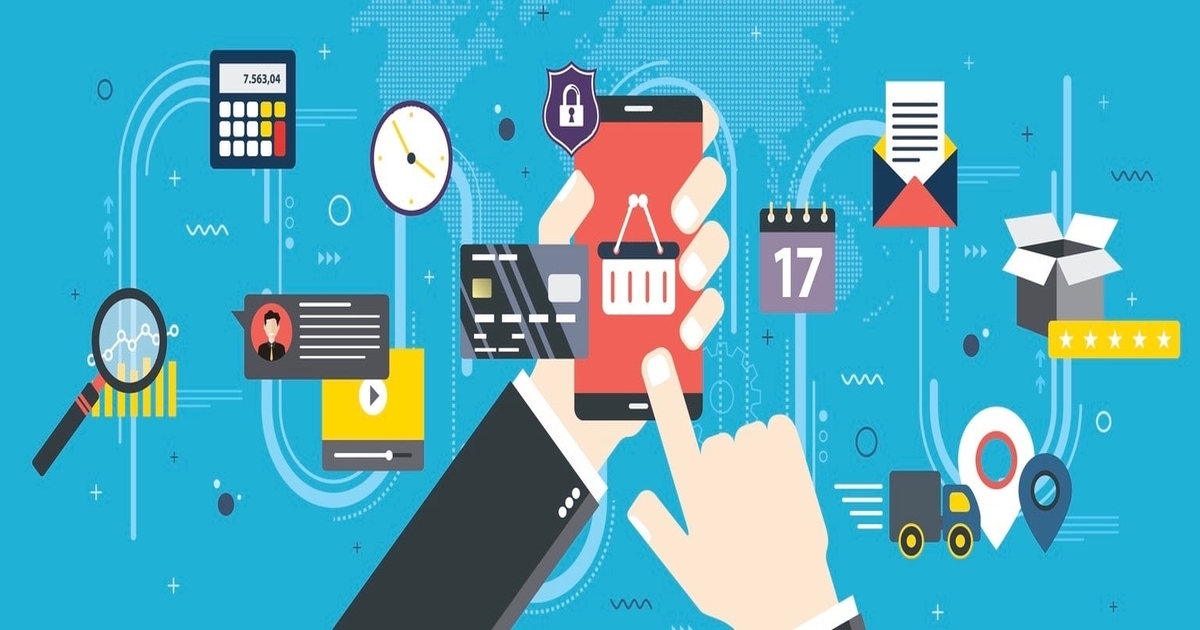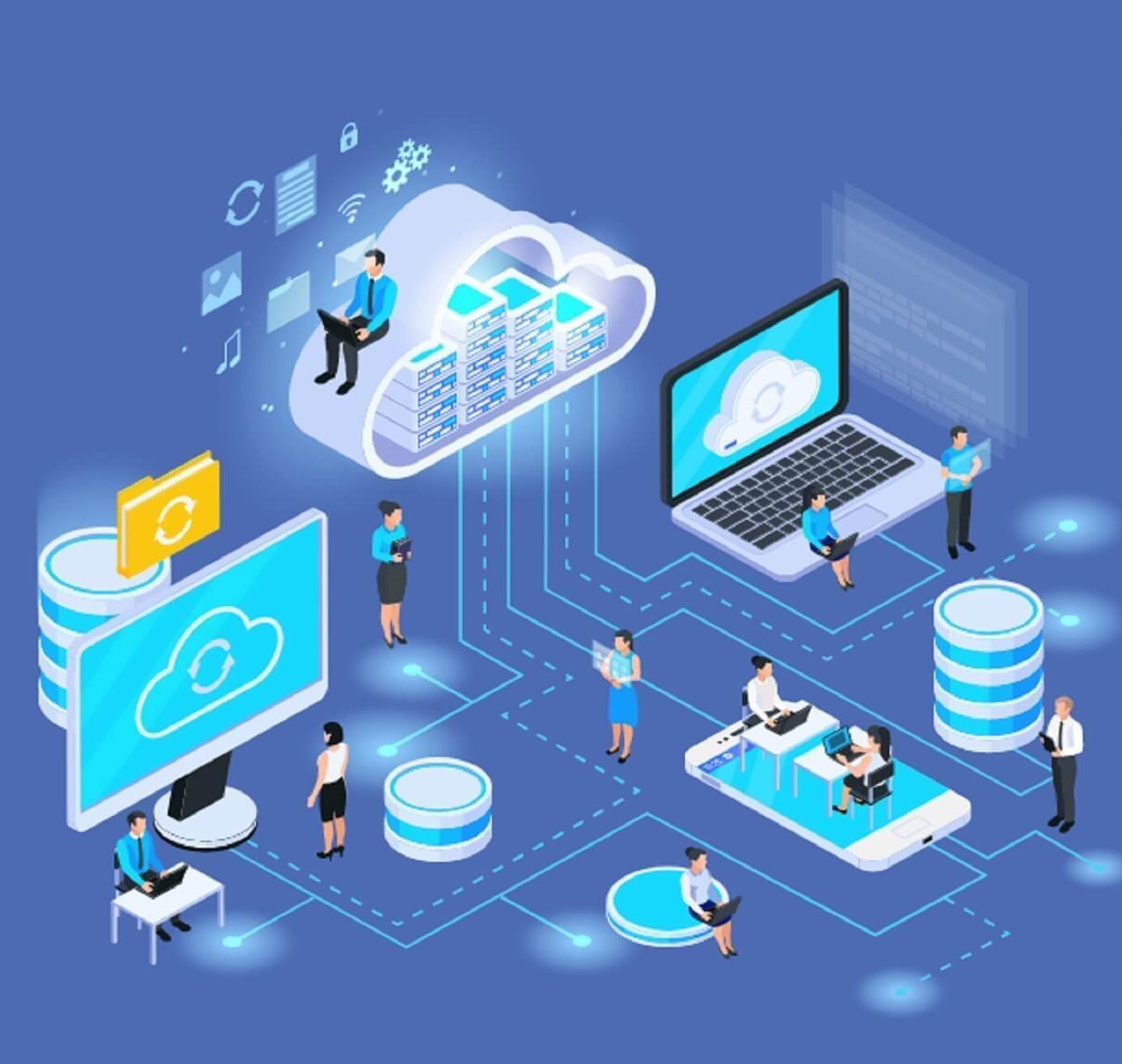In the contemporary digital landscape, mobile applications have seamlessly integrated into our daily routines. They fall into two distinct categories: enterprise apps and consumer apps, each serving unique purposes and specific user requirements. In this discourse, we will meticulously dissect both enterprise and consumer apps, shedding light on their resemblances, disparities, intended audiences, functionalities, objectives, typology, cost structures, revenue models, design elements, and provide real-world illustrations.
What Are Enterprise Apps for Enterprise?
The Essence of Enterprise Apps
Enterprise apps, as the very moniker suggests, are not your conventional software. They are the workhorses of the digital realm, defined by several defining traits:
- Intricacy: These applications thrive on intricacy, seamlessly amalgamating diverse functions, data sources, and intricate workflows. They are meticulously engineered to address the multifaceted and demanding requisites of businesses.
- Scalability: Enterprise apps are inherently designed for scalability. They possess the innate ability to adapt to the growth of an organization. In the face of expanding user bases, burgeoning data volumes, and evolving business prerequisites, these apps seamlessly transform while staying relevant.
- Component-Based Architecture: Many of these apps embrace a component-based architecture, permitting modular design that eases maintenance, updates, and expansions. This feature fosters a robust and dynamic structure.
- Mission-Critical Significance: Unlike their counterparts in the consumer sphere, enterprise apps carry the mantle of being mission-critical. They underpin indispensable business functions, rendering any downtime or glitches intolerable.
Fostering Collaborative Synergy With Enterprise Apps
Enterprise apps are notably marked by their capacity to encourage collaboration within organizational structures. Frequently, they encompass a suite of applications that function cohesively, delivering comprehensive support across varied facets of business operations. These applications encompass:
- Customer Relationship Management (CRM): CRM software like Oracle plays a pivotal role in nurturing customer relationships. It facilitates the tracking of customer interactions, sales management, and data analysis, ultimately enhancing customer satisfaction.
- Marketing Powerhouses: Applications such as Hubspot are meticulously crafted for marketing pursuits. They offer a comprehensive suite of tools for inbound marketing, content management, social media marketing, and analytics.
- Project Management Wizards: When businesses aim to streamline project planning and management, applications like Liquid Planner come to the rescue. These tools aid in resource allocation, progress tracking, and the assurance of timely and cost-effective project deliveries.
Enhancing Business Efficacy
Enterprise apps are more than just bells and whistles; they are instruments of tangible outcomes. These applications play an integral role in augmenting the effectiveness and productivity of businesses. By delivering support at a business level, they empower organizations to operate more efficiently and attain their objectives. Whether it’s ameliorating customer relations, optimizing marketing strategies, or ensuring projects remain on the trajectory to success, these apps are the linchpin.
In the corporate arena, where precision, efficiency, and reliability are non-negotiable standards, enterprise apps serve as the technological backbone that propels businesses toward success. They stand as the very tools that help organizations surmount their distinctive challenges, capitalize on opportunities, all while upholding the zenith of quality and performance.
Tailored for Individual Gratification
Consumer apps for consumer use can be likened to well-tailored garments, meticulously designed to fit the unique preferences of individual users. These applications transcend the one-size-fits-all approach, catering to the diverse and ever-evolving needs of consumers. The cardinal attributes that define them encompass:
- Personalization: These apps offer a high degree of personalization, endowing users with the ability to customize their experience. From profile settings to content recommendations, the aim is to make each user feel exceptional.
- User-Centric Design: User-centricity is at the epicenter of the design process. User-friendliness, intuitive interfaces, and an unwavering commitment to delivering a seamless experience are paramount.
- Seamless Integration: Consumer apps often seamlessly integrate with various aspects of a user’s life, cultivating an interconnected digital ecosystem that traverses the domains of social interaction and daily tasks.
The Pursuit of Convenience
The primary objective of consumer apps for consumer use is to simplify and streamline users’ experiences, particularly those related to purchasing. These applications aspire to make everyday life more convenient and enjoyable, and they do so through the following means:
- Social Connectivity: Applications such as Facebook, Instagram, and WhatsApp have revolutionized the way we connect with friends and family. They offer features for instant messaging, photo and video sharing, and even video calls.
- Bountiful Entertainment: Games like Candy Crush Saga have evolved into global phenomena, providing entertainment at the user’s fingertips. Users can indulge in quick gaming sessions during their leisure moments.
- On-Demand Services: Economy-sharing solutions like Grab, Uber, and Airbnb have metamorphosed the way we travel and secure accommodations. They grant convenient access to transportation and lodging, frequently at competitive prices.
Analyzing the Contrasts and Overlaps: Enterprise Apps vs. Consumer Apps
Similarities Between Enterprise Apps and Consumer Apps:
- User-Centric Orientation:Both enterprise apps and consumer apps share a resolute focus on the end-user experience. Irrespective of the context, user-friendliness is at the core, ensuring that individuals navigate the application with ease.
- Responsiveness:Responsiveness is a shared attribute. Whether it’s a consumer app or an enterprise solution, both categories are ardently committed to seamless performance across diverse devices and screen sizes.
- Logical Interface:A rational and intuitive interface is a foundational element in both categories. Users expect an interface that makes sense, facilitating the efficient realization of their objectives.
- Positive User Experience:The optimization of design and code aspires to yield a positive and engaging user experience. In both scenarios, the ultimate objective is to render users content and satisfied.
Disparities Between Enterprise Apps and Consumer Apps:
1. Target Audience:
-
- Consumer Apps for Consumer Use:These apps embrace a broad and diverse target audience, catering to individuals from all walks of life.
- Enterprise Apps for Enterprise:In stark contrast, enterprise apps are meticulously tailored to meet the unique requisites and objectives of businesses.
2. Accessibility:
-
- Consumer Apps for Consumer Use:These apps are ubiquitously accessible through app stores, available for download and utilization by virtually anyone.
- Enterprise Apps for Enterprise:Enterprise apps are typically confined to employees and authorized personnel within the same organization. They are not readily available to the general public.
3. Functionalities:
-
-
- Consumer Apps for Consumer Use:The central thrust of consumer apps revolves around enriching individual daily life, providing solutions for a diverse array of predicaments, ranging from entertainment to productivity tools.
- Enterprise Apps for Enterprise:In contrast, enterprise apps are meticulously crafted to empower businesses to fulfill their objectives with heightened efficiency and effectiveness. Their functionalities are finely tuned to address specific organizational needs.
-
4. Objectives:
-
- Developers of Consumer Apps:The developers of consumer apps ardently pursue positive reviews, an uptick in user numbers, and revenue generated through subscriptions and in-app purchases. Their success is often quantified by user engagement and satisfaction.
- Developers of Enterprise Apps: Developers of enterprise apps, on the other hand, primarily aim to enhance operational efficiencies, boost client revenues, and create appealing interfaces that raise employee productivity and satisfaction. They measure success in this realm by assessing its impact on the organization’s bottom line.
5. Typology:
-
- Consumer Apps for Consumer Use:These applications span a wide spectrum of industries and purposes, traversing domains from social media to gaming. They encapsulate a multitude of sectors.
- Enterprise Apps for Enterprise:Enterprise apps can be classified into open apps and closed apps, each serving precise business needs. They are more niche and specialized.
6. Cost Structure:
-
- Enterprise Apps for Enterprise:The development of enterprise apps, especially closed ones, can entail a higher cost due to their intricacy and customization. This investment is warranted by the tailored solutions they furnish to businesses.
7. Revenue Models:
-
- Consumer Apps for Consumer Use:Revenue in the realm of consumer apps is principally derived from in-app purchases, subscriptions, and advertising. These apps often hinge on a high volume of individual users.
- Enterprise Apps for Enterprise:Enterprise apps can generate revenue through diverse means, encompassing direct licensing fees or indirect methods intertwined with client profits. Their revenue streams are intrinsically linked to business outcomes.
8. Design Priorities:
-
- Consumer Apps for Consumer Use:These apps frequently accord paramount importance to forging an emotional connection with users through design elements. Aesthetic appeal is a central focus.
- Enterprise Apps for Enterprise:In the enterprise domain, functionality prevails over aesthetics. The design predominantly serves the core purpose of enhancing productivity and efficiency within the organization.
Understanding these parallels and divergences is paramount to comprehending the unique roles that enterprise apps and consumer apps play in the digital panorama. While they may share certain principles, their ultimate objectives and impact diverge significantly, with consumer apps enhancing personal lives and enterprise apps driving organizational triumph.
Examples of Enterprise Apps for Enterprise and Consumer Apps for Consumer Use
Enterprise Application Examples for Enterprise
Enterprise apps designed for corporate environments serve as powerful tools to enhance productivity and efficiency within businesses and organizations. Here are some notable examples:
- Oracle
- Type: Database Management System
- Functionality: Provides data storage, retrieval, and analysis for various applications.
- Key Benefits: Enables efficient data management, critical for businesses’ operations.
- Use Case: Commonly used in businesses to manage and access large datasets, facilitating decision-making and analysis.
- Zoom
- Type: Video Conferencing and Collaboration Platform
- Functionality: Enables online meetings, webinars, and chat for teams and organizations.
- Key Benefits: Facilitates remote collaboration, reducing the need for physical meetings.
- Use Case: Widely adopted in the corporate world for virtual meetings, webinars, and team communication.
- Shopify
- Type: E-commerce Platform
- Functionality: Allows businesses to create online stores and sell products.
- Key Benefits: Provides a user-friendly platform for e-commerce, with customization options.
- Use Case: Many businesses, from small startups to large enterprises, use Shopify to establish and manage their online storefronts.
- Mailchimp
- Type: Email Marketing Service
- Functionality: Helps businesses design, send, and track email campaigns.
- Key Benefits: Streamlines email marketing efforts, tracks campaign performance.
- Use Case: Used by marketing teams to reach their target audience effectively through email campaigns.
- Asana
- Type: Project Management Tool
- Functionality: Assists teams in organizing, tracking, and completing tasks.
- Key Benefits: Enhances project management and collaboration, ensuring tasks are completed efficiently.
- Use Case: Various teams and departments within organizations utilize Asana to manage projects and tasks effectively.
Consumer Application Examples for Consumer Use
Consumer apps, on the other hand, are designed to cater to the needs and desires of individual users. They often focus on entertainment, communication, and personal convenience. Here are some well-known consumer app examples:
1. Instagram
- Type: Photo and Video-Sharing App
- Functionality: Allows users to apply filters, edit photos and videos, and share content with followers.
- Key Benefits: Fosters personal expression and social interaction through visual media.
- Use Case: Millions of users use Instagram to share their daily experiences, art, and personal moments.
2. Spotify
- Type: Music Streaming Service
- Functionality: Provides access to millions of songs, playlists, and podcasts.
- Key Benefits: Offers a vast library of music and audio content for personal enjoyment.
- Use Case: Music enthusiasts use Spotify to discover, stream, and create playlists of their favorite songs.
3. Netflix
- Type: Video Streaming Service
- Functionality: Offers a wide range of movies, TV shows, documentaries, and original content.
- Key Benefits: Provides on-demand entertainment, including exclusive content.
- Use Case: Subscribers enjoy a diverse collection of visual entertainment, from films to TV series.
4. Candy Crush Saga
- Type: Casual Puzzle Game
- Functionality: Challenges users to match candies and clear levels.
- Key Benefits: Provides casual entertainment and mental stimulation.
- Use Case: Gamers of all ages enjoy playing Candy Crush Saga during leisure time.
5. PayPal
- Type: Digital Payment Service
- Functionality: Allows users to send and receive money online.
- Key Benefits: Simplifies online transactions and financial transfers.
- Use Case: Individuals and businesses use PayPal for secure online payments and money transfers.
Conclusion
In this article, we have compared the key features and challenges of enterprise apps and consumer apps. Whether you need an app for internal use or for reaching a wider audience, or a reliable and professional partner to turn your vision into reality. OnextDigital is a top-rated web and mobile app development company that offers customized solutions for various industries and niches. Furthermore, we have a team of the best experts who can design and build world-class apps that meet your specific needs and goals. Contact us today to get a free consultation and quote for your project. You will be amazed by what we can do for you.







